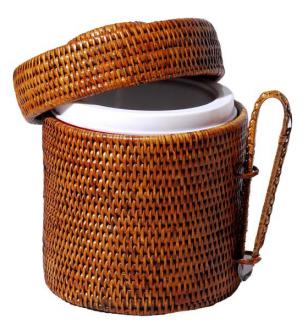Rattan basketware
Product code: RBW23
Rattans (Calamus spp.) are a large group of spiny climbing palms that grows in the wild and are customarily cultivated within the system of shifting rainfed rice production in East Kalimantan by following the migratory nature of the traditional shifting agriculture
Call to order: (+84) 903 036 280
The rice-rattan sequential agroforestry practices of the Dayak people in Kalimatan reach back in history more than 400 years, spreading from the Bentian area up the Mahakam river centrally in East Kalimantan. Like other shifting cultivation practices, the farmers first clear a portion of forest to plant padi (rice) intercropped with various types of vegetables and fruits, and at the same time plant rattan seeds or seedlings at strategic points (tanah mata). After the harvest of rice and secondary crops for one-two to three agricultural seasons, the rattan palm will be left to grow for 7 ++ years before being harvestable. Rattan has the ability to regenerate and shoot sprouts after being harvested, implying that harvesting can be maintained continuously on the plot once the plant reach maturity. Finally, after customarily more than fifteen years, the plot is cleared for rice production again, and any rattan on the plot is all harvested.



 Palmleaf
Palmleaf
